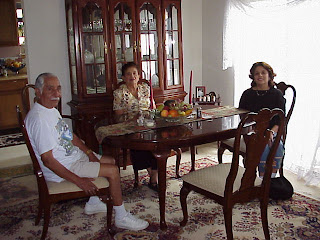The Jewish holiday of Passover and Christianity’s holiest day, Easter, share millennia of history, themes of redemption, hope and growth, even signature foods, but they rarely coincide. This year, thanks to the complicated dynamics of the lunar calendar, the basis of the Jewish year, they also share a weekend.
Passover, an eight-day holiday, always begins with an evening-meal service called a
Seder, on the 15th of Nisan, the first month on the Jewish calendar, which bridges March and April. This year, the 15th falls on Friday, also Good Friday, the day on which Christians mark the crucifixion of Jesus.
During Passover, Jews specifically commemorate the Israelites’ liberation from slavery in ancient Egypt — the Exodus/Moses/Red Sea story — and more broadly, God’s power to save the Jewish people from annihilation, generation after generation.
Central to the Seder are the notions that elders must pass on the story to their children, and that strangers should be welcomed, because the Jewish people were strangers in many lands between the fall of the Second Temple in Jerusalem some 1,942 years ago, and the State of Israel’s founding after the Holocaust, in 1948.
Easter Sunday marks the end of Holy Week, which commemorates Jesus’ final days, from his entrance into Jerusalem through the Resurrection. It’s the last week of Lent, a 40-day period of prayer and repentance.
“Passover is really a story of salvation, although many now consider it a story of freedom,’’ said Rabbi Mitch Chefitz, scholar-in-residence at Miami’s Temple Israel. Thus, around many
Seder tables, discussions will involve manifestations of oppression from anti-Semitism, racism and homophobia to poverty, deprivation and genocide.
Chefitz calls them “tight places.’’
As Jews, he said, “we recognize that we have been through any number of tight places, and have an obligation to see others in tight places and open doors for them.’’
He adds to the list some of modern life’s metaphorical “enslavements.’’ “The most difficult thing Moses had to do was convince [the Israelites] that they were slaves,’’ he said. “They were fed, they were clothed,’’ and therefore complacent. “As a rabbi, my task is to convince [congregants] that they are in tight places. I tell them to empty their pockets and put it all on the table: the credit cards, the iPhone, the car keys. Tell me they are not tight places...Awareness is the first step to making change.’’
Though they represent seminal events for two different faiths, the holidays have much in common, including many of the foods that appear on the
Seder table and in Christian liturgy and ceremony: fish, lamb, greens, wine, eggs, and unleavened bread (the Eucharist). Indeed, theologians have debated for centuries whether three of the four Gospels — Matthew, Mark and Luke — correctly identify the Last Supper as a Passover Seder. The Gospel of John, and some scholars both Jewish and Christian, say it couldn’t have been, based on the hour of the crucifixion. “Frankly, does that matter?’’ asks The Rev. Douglas McCaleb, dean of Miami’s Trinity Cathedral, an 87-year-old Episcopal church currently under renovation. “The symbolism is important; the date much less so.’’ Like Passover, he added, “the Christian celebration is our commemoration of passing over from the bondage of sin to a new life of freedom...As we rebuild and renew this cathedral, we need to look at rebuilding and renewal in our relationships with one another.’’
Read more here: http://www.miamiherald.com/2012/04/05/2733893/passover-and-easter-have-much.html#storylink=cpy










